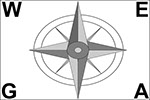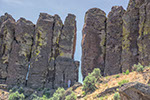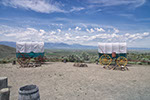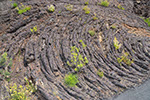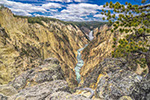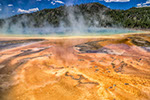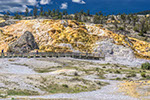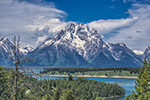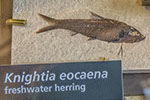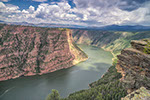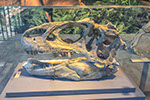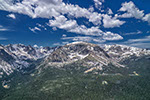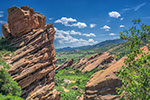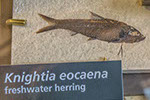WEGA in the North West United States
May 29th to June 11th 2016
Day 5 - Thursday 2nd June 2016
We did not linger in Jerome - there is not much to keep anyone in the place - and set off for the Craters of the Moon across the Snake River Plain. Here it is filled with volcanic rocks, commonly presumed to come from the hot spot currently under Yellowstone National Park. But this may not be so, as, among other problems, the Snake River Plain is bent, but the track of North America over the hotspot does not show a similar bend. Doug has an interesting discussion on this topic and it can be found HERE. If I understood it better I would write about it on this page but I know that anything I wrote would just be a rehash of someone else’s ideas.
Our main objective of the day was the youngest rocks infilling the Snake River Plain. These are the basaltic lava flows of the Craters of the Moon. The US Geological Survey has fairly recent publications - map and memoir - available for download from THIS SITE. Rather more information than most of us would want but it is a very pretty map.
The Craters of the Moon National Monument has 60 lava flows and of these the oldest is 15,000 years old and the youngest 2,000 years. It contains many features and these will be illustrated in the pictures which make up the bulk of this page. A description of some of the features can be found HERE.
Aa lava on the right, pahoehoe on the right. Pahoehoe often merges into aa asit becomes more viscous.
A school group walking over the lava field. In the background is the green hill of an older volcanic cone which has become covered in vegetation by the passage of time.
Rafted blocks:- these blocks were part of a cinder cone ripped from the wall and transported like icebergs by the lava from the cone.
Age dating. The tree was dated as being 1,350 years old by means of annual growth rings. So the lava must be older - in fact it is 2,000 years old (using carbon isotope dating).
A tree mould. You can see the impression of the tree bark if you look closely and relax your standards of proof. It is not very good but it is the best I could find. HERE is a better one I photographed in Hawaii. Tree moulds form when a tree is overwhelmed by lava. Lava solidifies around the tree and takes on its shape.
A lava tube cave. This is one of the Buffalo Caves. You can see a larger lava tube cave photographed in Hawaii HERE. As lava flows it solidifies on its surface and edges while the centre continues to flow. If lava flow into the tube ceases, the liquid lava in the centre of the tube can empty itself and leave a cave.
Spatter Cones. These "miniature" volcanoes form during the final stages of a fissure type eruption. As gases escape and pressure is released, the lava becomes thick and pasty. When these sticky globs of lava plop to the surface, they pile up to form spatter cones.
WEGA in the North West United States
